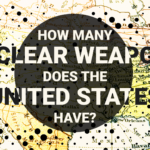The legacy of Reykjavik and the future of nuclear disarmament
By Paul F. Walker, Jonathan R. Hunt | December 15, 2011
After two exhausting days of debate, negotiation, and concession in Reykjavik, Iceland, US President Ronald Reagan and Soviet General Secretary Mikhail Gorbachev had come to a dead end. An improbable agreement for nuclear disarmament was in jeopardy because the delegations quibbled over one word: “laboratory.” Could the United States test its Strategic Defense Initiative (SDI) — an embryonic antiballistic missile system known as “Star Wars” — in space, or should research and development stay grounded?
When the discussions stalled, Gorbachev’s foreign minister, Eduard Shevardnadze, warned of history’s final verdict: “I feel that we have come very close to accomplishing this historic task. And when future generations read the record of our talks, they will not forgive us if we let this opportunity slip by.”
Yet the opportunity did slip by. The regret was palpable. US Secretary of State George Shultz appeared dejected when he addressed the press afterward. Reagan later confessed that his “hope for a nuclear-free world soared briefly” that afternoon in Reykjavik, “then fell, during one of the longest, most disappointing — and ultimately angriest — days of my presidency.”
Reykjavik’s legacy remains unresolved 25 years later. The summit of October 11–12, 1986 was the nearest the world has come to abolishing nuclear weapons. Antinuclear doves and experienced diplomats alike were despondent over the opportunity lost. But Reykjavik was never meant to be a watershed. The original agenda was modest — to prepare for upcoming summits in Washington and Moscow. American and Soviet negotiators were stunned when their principals raised the prospect of mutual nuclear disarmament. As a result, Reykjavik has become synonymous with the unforeseen and anticlimactic in the intervening years.
A third aspect of Reykjavik’s legacy is less well understood — its constructiveness. James Matlock, an American negotiator at Reykjavik and later US ambassador to Moscow, deemed the summit “a psychological turning point.” True, the United States and Soviet Union never reached full accord on disarmament. The Reykjavik talks were nevertheless pivotal to achieving the 1987 Intermediate-Range Nuclear Forces Treaty (INF) and the 1991 Strategic Arms Reductions Treaty (START I). As Gorbachev himself concluded when he returned to Moscow that October day, “[W]e drew the conclusion that the necessity for dialogue ha[d] increased even more.” He remained “an optimist.”
If Reykjavik showed that disarmament talks could generate progress on interrelated matters, it also proved that disarmament was no fantasy; on the contrary, it was achievable given the right conditions. Reagan and Gorbachev overcame years of distrust and conflict to contemplate a world without nuclear arms. The Soviet economy’s feebleness and the Chernobyl disaster helped to impel this push for nuclear disarmament. The ongoing global recession and the nuclear catastrophe at the Fukushima Daiichi Nuclear Power Station should spur global statesmen to similar ends. For there to be continued progress toward Reagan and Gorbachev’s common dream, however, today’s leaders must display equal vision and boldness in pursuit of nuclear abolition.
The rocky path to Reykjavik. Reagan entered office at a moment of extreme distrust between the superpowers. His early presidency has been called “the most dangerous [period] … in Soviet–American relations since the Cuban missile crisis.” This enmity resulted from developments in the Middle East in the late 1970s. Soviet support for the Islamic Revolution in Iran, where rebels took 52 American hostages, and the Red Army’s invasion of Afghanistan worked together to sabotage US–Soviet détente. Resurgent US anticommunism helped to vault Reagan to electoral victory in 1980. More than 50 senior officials in his administration, including the president himself, belonged to the Committee on the Present Danger, a hardline foreign policy group that objected to arms control agreements. Reagan quickly increased the US military budget from less than $175 billion in 1979 to nearly $230 billion in 1981 — the same proportion of GDP in 2010 would have amounted to over $1 trillion. His administration moreover issued provocative statements of nuclear brinksmanship, drawing on the conclusions of Team B, a group of intelligence outsiders who judged the CIA to have underestimated Soviet military capabilities and bellicosity. This truculence deepened the worries of a Soviet leadership already concerned about the upcoming deployment of ground-launched cruise missiles and medium-range Pershing II missiles in Europe.
Reagan crystallized the more confrontational US posture in a speech on March 8, 1983, before a meeting of the National Association of Evangelicals in Florida. Branding the Soviet Union an “evil empire,” Reagan lambasted those who “would place the United States in a position of military or moral inferiority” by supporting a freeze in both sides’ nuclear arsenals.
The full contents of this article are available in the November/December issue of the Bulletin of the Atomic Scientists and can be found here.
Together, we make the world safer.
The Bulletin elevates expert voices above the noise. But as an independent nonprofit organization, our operations depend on the support of readers like you. Help us continue to deliver quality journalism that holds leaders accountable. Your support of our work at any level is important. In return, we promise our coverage will be understandable, influential, vigilant, solution-oriented, and fair-minded. Together we can make a difference.
Topics: Nuclear Weapons, Opinion
















